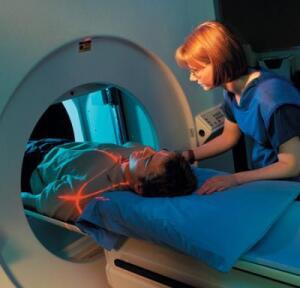by
Brendon Nafziger, DOTmed News Associate Editor | September 06, 2011
Chest CT is the third most commonly performed type of CT scan, and is generally used to diagnose lung cancers or infections. It's critical for detecting diseases, but some of the most radiosensitive organs in the body can get exposed to ionizing radiation during the scan.
But luckily, radiologists say, much lower radiation dose scans are now possible.
In an article in the current issue of the Journal of the American College of Radiology, researchers offered a handful of tips for reducing the dose of ionizing radiation delivered to patients.



Ad Statistics
Times Displayed: 1227
Times Visited: 6 Fast-moving cardiac structures have a big impact on imaging. Fujifilm’s SCENARIA View premium performance CT brings solutions to address motion in Coronary CTA while delivering unique dose saving and workflow increasing benefits.
"Use of the appropriate radiation dose for chest CT is especially important because of direct radiation exposure of breasts, lungs and other organs, such as the thyroid," Mahadevappa Mahesh, a medical physicist with Johns Hopkins University School of Medicine in Baltimore, and corresponding author of the article, said in a statement.
Here were some of the authors' suggestions:
Stratification of protocols
One of the most important tips is stratifying CT protocols based on the dose needed to identify abnormalities. For instance, lower doses can be used for lung-only growths than for mediastinal masses and other soft-tissue lesions, the doctors say.
Noise reduction
When possible, consider using equipment with noise-reducing algorithms such as partial iterative reconstruction techniques, the authors said. These allow clearer, but lower-dose, chest scans. However, the techniques offered by vendors differ, and it's important to understand those differences, they said.
Low-dose screening
Lung cancer screening has had a big push recently. A study found that at-risk patients -- such as current and former smokers -- were less likely to die if they signed up for regular chest CT scans. However, the technique has come under criticism from patient advocates who worry the false-positive rate is too high. Nonetheless, the doctors said the scans can generally be achieved at doses under 1.5 mSv for most patients.
Less for kids
Using lower doses with children is critical, as children are more radiosensitive and have longer lives ahead of them in which to develop radiation-induced cancers. In the article, the doctors say children can be scanned, generally, at a lower tube voltage: kids weighing less than 44 pounds can be scanned at 80 kVp, and 100 kVp can be used in children weighing up to about 132 pounds.
But one of the most important tips: make sure it's really clinically necessary and there are no alternatives. For instance, the doctors say a thoracic MRI -- which obviously doesn't deliver an ionizing radiation dose -- can be used for certain chest wall abnormalities and mediastinal masses.
Doctors with Massachusetts General Hospital and Harvard Medical School, both in Boston, also contributed to the report.
"Pointers for Optimizing Radiation Dose in Chest CT Protocols," out now in the Sept. JACR, can be found here: http://www.jacr.org/article/S1546-1440%2811%2900328-0/fulltext

